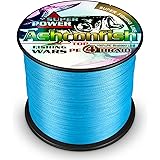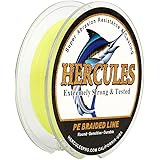Tomato Hacks for Survival: Advanced Wilderness Resourcefulness
Venturing into the wild demands a profound understanding of natural resources. The accompanying video offers a glimpse into ingenious applications, showcasing a survivalist employing what appears to be tomato-based concoctions for various wilderness challenges. While the visual narrative is succinct, it underscores a critical truth: even common garden produce can transform into vital tools when conventional supplies are scarce. This article delves deeper into the sophisticated world of utilizing tomatoes and related Solanaceae for enhanced survival capabilities, moving beyond basic sustenance to explore their potential in areas like pest management, hygiene, and even rudimentary first aid protocols.
Unlocking the Potential of Wilderness Survival Tomatoes
The humble tomato, Solanum lycopersicum, is far more than just a culinary delight; its properties extend into pragmatic survival scenarios. Historically, various indigenous cultures have leveraged plant compounds for purposes beyond simple consumption. When considering tomato hacks for survival, we enter a realm where botanical knowledge interfaces directly with immediate needs in austere environments. The plant’s inherent characteristics, from its fruit’s high water content to the chemical makeup of its foliage, present a multifaceted resource for the informed survivalist.
For instance, the significant water content of a ripe tomato—typically around 95%—positions it as an immediate source of hydration. While directly consuming raw tomatoes can contribute to fluid intake, understanding how to extract and filter this liquid effectively can further enhance its utility, especially when potable water sources are scarce. Furthermore, the fruit’s acidity (with a pH generally ranging from 4.0 to 4.5) confers mild antiseptic properties, which can be advantageous in improvising wound care or sanitization efforts.
Crafting Natural Defenses: Tomato Plant-Based Pest Repellents
One of the most compelling applications suggested by the video’s focus on plucking leaves, mixing, and spraying involves natural pest management. The leaves, stems, and even green fruit of tomato plants contain a complex array of alkaloids, primarily solanine and tomatine. These glycoalkaloids are known to be mildly toxic to many insects and certain animals upon ingestion, serving as the plant’s natural defense mechanism. While harmful if consumed by humans in significant quantities, these compounds can be harnessed topically or aromatically to deter pests without direct ingestion.
Research into plant-derived pest control agents frequently highlights the efficacy of compounds found in Solanaceae. For example, studies published in entomological journals demonstrate that extracts from various solanaceous plants can disrupt insect feeding, growth, and reproduction. Creating a crude extract by crushing tomato leaves and infusing them in water, as implied by the visual of pouring leaves into a bottle, can yield a potent repellent. This liquid, when applied via an improvised spray mechanism, could provide a temporary barrier against biting insects, a critical aspect of maintaining health and morale in wilderness survival scenarios where insect-borne diseases are a significant threat.
Improvised Hygiene and First Aid with Botanical Extracts
The actions of squeezing liquid, using a syringe, and spraying also hint at applications in improvised hygiene and rudimentary first aid. In a survival context, maintaining cleanliness is paramount to preventing infection. The slightly acidic nature of tomato juice, coupled with its antioxidant profile (rich in lycopene and Vitamin C), offers a fascinating avenue for exploration. Lycopene, a powerful antioxidant, protects cells from oxidative stress, and while direct wound healing properties from topical application of tomato juice are not clinically established, its mild acidity can certainly aid in flushing and temporary disinfection of minor cuts and abrasions.
Moreover, the concept of using a syringe to draw and inject liquid into a bottle suggests a precise method of creating or combining solutions. This could involve mixing tomato juice with other foraged antiseptic plants, such as pine needle infusions known for their antimicrobial properties, to create a more effective cleansing agent. Such botanical synergism is a core principle in traditional ethnobotany and holds considerable relevance in modern bushcraft. The careful measurement and application via spraying ensure efficient use of precious resources and targeted delivery to wounds or areas requiring sanitization.
Advanced Foraging and Phytochemical Applications
Beyond the immediate practicality, the video nudges us towards a deeper understanding of advanced foraging and the application of phytochemicals. Identifying and safely utilizing plants from the wild requires an expert level of botanical knowledge. For instance, correctly identifying tomato plants and distinguishing them from toxic look-alikes is a fundamental skill. Furthermore, understanding which parts of the plant are beneficial and how to process them to minimize risks (e.g., avoiding ingestion of raw green leaves) is crucial for effective tomato hacks for survival.
Consider the potential for osmotic pressure. While saline solutions are ideal for wound irrigation, in their absence, slightly acidic fruit juices could play a role in creating an environment less hospitable to certain bacteria, even if only temporarily. The act of “sniffing” the solution, as depicted in the video, could be interpreted as a method of assessing its potency, freshness, or ensuring the absence of noxious odors indicative of spoilage or incorrect preparation. This sensory evaluation is a vital part of fieldcraft, providing immediate feedback on the efficacy and safety of improvised solutions when laboratory analysis is unavailable.
The integration of advanced botanical knowledge into wilderness preparedness significantly enhances the chances of sustained survival. By understanding the chemical composition and practical applications of plants like the tomato, survivalists can expand their toolkit far beyond conventional gear. Whether it’s for creating a natural insect deterrent, improvising a cleansing agent for minor wounds, or simply supplementing hydration, leveraging these tomato hacks for survival transforms a common plant into a strategic ally in the wild.











